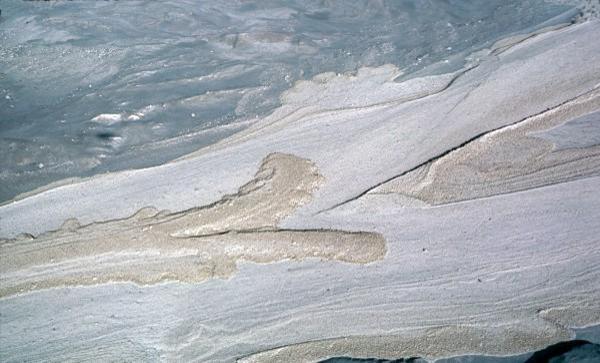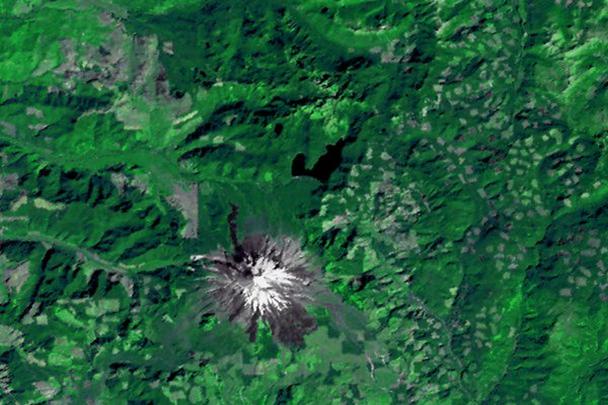Short Term Effects
The eruption triggered a number of effects in the first few days after it occurred, both locally and on a larger scale. One of the most significant effects was the immediate damage caused over the course of the first day. Surprisingly, much of the significant damage was caused by the flooding of Spirit Lake, 1000 m above sea level on the northern flank of the mountain. The flooding wasn't, in fact, a direct result of the eruption, but of the landslide that preceded it. Much of the material and debris was deposited into the lake basin, filling it up and displacing all the water, which then surged down the mountain and into a nearby valley.
The actual blasts from the volcano were lateral, shooting debris and volcanic material many kilometres to the north of the volcano. The volcano also emitted much lava and gas out of the crater, which flowed down the mountainside in the form of pyroclastic flows, burning at over 200 degrees centigrade.
The flood-waters, pyroclastic flows, lahars, falling debris and ash emitted from the eruption devastated the surrounding area;
- In all fifty-seven people were killed, the deaths due to the poisonous gas released during the eruption and the pyroclastic flows, which burnt everything in their path as they raced down the mountain at over 200 miles per hour
- A number of logging camps in the foothills of the mountain were destroyed - luckily almost all of the loggers were absent because it was a Sunday, but four were killed by the pyroclastic flows
- Electric and phone lines were down, affecting the local area
- Cars in three states had problems with their engines due to the ash over the first week after the eruption, and thousands of flights were cancelled
- Inhabitants of Yakima, 120 km away, had to wear masks to go outside because of the ash the day after the eruption
- 950 million dollars were paid out by the US government to local businesses to cover a short term dip in the local economy

A pyroclastic flow at Mt St Helens - USGS


